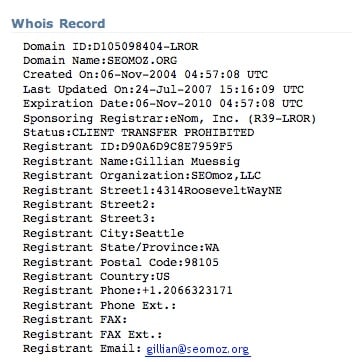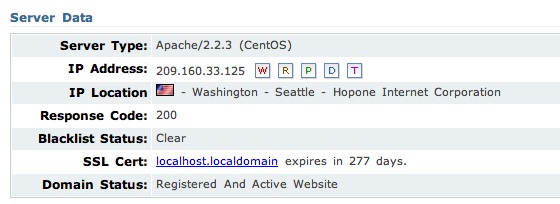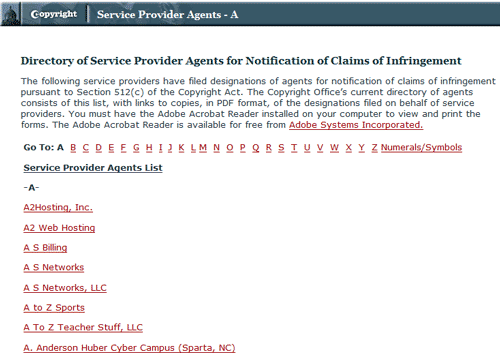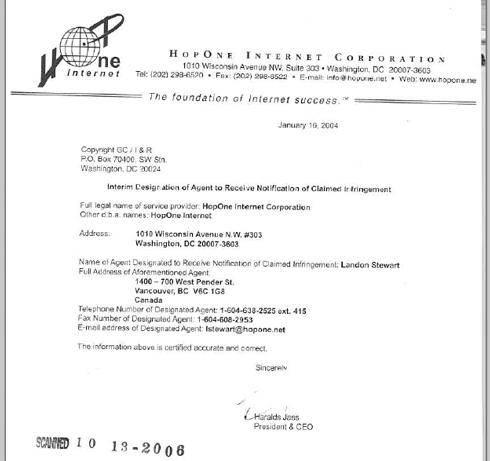
Four Ways to Enforce Your Copyright: What to Do When Your Online Content Is Being Stolen
May It Please the Mozzers,
It's just another manic Monday at the Mozzplex. You know what that means. Legal Monday!
One of the most common problems facing anyone who publishes content online is copyright infringement. It's happened to me. It's happened to you. And it'll probably happen to this post too. (Oh, the irony!)
What can you do when your copyright is being infringed? Don't get sad. Get letter-writing mad!
There are four ways to stop someone from stealing your content. Before we dive into each of those methods, I want to preemptively address some caveats, complicating factors, and limitations of the "four methods" approach.
1. Contact the website owner
Always start by simply asking the website owner to remove the infringing content.
I know that this sounds naïve. In most cases the people who are scraping your site know exactly what they are doing. They are trying to make some quick cash off of your genius. Regardless, I do think it is important treat others the way you want to be treated. Thus, we have a policy at SEOmoz of notifying the website owner of the infringing content before we take any further steps. If it is an innocent infringer, then the person will take it down right away. If it’s a spam farm in Russia, then you probably won’t get any response at all.
⇒ How do I contact the website owner?
The contact information is often on the site itself. If it’s not there (another hint that you’re dealing with dark forces), then go to your preferred WhoIs service and type in the domain name. This returns all kinds of useful information for combating plagiarism. It indicates the contact information, including an email, for the site owner.
⇒ What do I do if the WhoIs information is inaccurate?
If the WhoIs information is not correct, then you can try digging for more information by using a reverse IP search. Sometimes this reveals more information than a domain search. As a last ditch effort, you can send an email to [email protected].
⇒ Can I have an example of working with WhoIs information?
Let's use SEOmoz.org as an example. Suspend your disbelief and imagine for a moment that SEOmoz has ripped off some of your content. Assume further that we didn't post our contact information on the site. You could find out whom to contact by looking up SEOmoz's WhoIs information. I like to use whois.domaintools.com, but there are other WhoIs services around.
If you looked up SEOmoz.org on Whois.domaintools.com, here is what you would see after scrolling just below the fold of the page:

2. Send a Take-Down Notice to the Online Service Provider (“OSP”)

As you can see, next to IP Location, it indicates that our server is operating out of Washington and that HopOne Internet Corporation is our Server. Now that you have found out the identity of the OSP, you still need to know how to contact the OSP.
⇒ How Do I Find the Contact Information for the OSP?
Often, you can find the OSP's contact information by searching for its website and getting the information directly from the OSP's site. For example, the fine folks at HopOne.net make it extremely easy to get a hold of them to report abuse. It's on the "contact us" page under "report abuse."
However, it won't always be so easy. Let's assume for a minute that you couldn't find contact information for HopOne on its site. The DMCA has statutory incentives to encourage OSPs to register with the U.S. Copyright office. Thus, to locate the contact information for your OSP, go to the U.S. Copyright office list of designated agents for OSPs. Look on that list under the letter "H" for Hop One.

Click on the OSP's name to view a pdf of the contact information for the OSP's designated agent. HopOne's information is below:

Now you should be able to contact the OSP.
⇒ What do I say in my letter to the OSP?
Sometimes OSPs have special instructions on their websites about the information they need from you before they take action. Generally, OSPs want to know the following:
Best Practice: Always keep a copy of your communications and make sure they are professional. They could end up being used as evidence in court.
⇒ What if the OSP is located outside of the U.S.?
If the OSP is located outside of the U.S., then it is not subject to the laws of the United States and has no legal imperative to take down the site. That is why a lot of questionable U.S. based companies (and companies that know they are going to be operating on the boundaries of fair use) select ‘off-shore’ OSPs.
Best Practice: Because it costs very little to do it and it is possible that the foreign jurisdiction will have a DMCA-like law of its own, always send a letter to the foreign OSP.
If Step 2 doesn't get you anywhere, you can still contact the domain's registrar. This brings us to Step 3.
3. Send a Take-Down Notice to the Company that Registers the URL
Many registrars also disable domains that engage in copyright infringement. Thus, once you determine who it is, you can send the registrar a DMCA Take-Down Notice as well.
⇒ How Do I Find Out Who the Domain's Registrar Is?
4. Send a Take-Down Notice to the Search Engines
Very truly yours,
Sarah
It's just another manic Monday at the Mozzplex. You know what that means. Legal Monday!
One of the most common problems facing anyone who publishes content online is copyright infringement. It's happened to me. It's happened to you. And it'll probably happen to this post too. (Oh, the irony!)
What can you do when your copyright is being infringed? Don't get sad. Get letter-writing mad!
There are four ways to stop someone from stealing your content. Before we dive into each of those methods, I want to preemptively address some caveats, complicating factors, and limitations of the "four methods" approach.
- Make sure the website is actually unlawfully infringing your copyright and not making "fair use" of your content. You won't make any friends if you're throwing around unfounded nastygrams and issuing unwarranted DMCA take-down notices. The people at Chillingeffects.org will certainly not be pleased. Also, there is a possibility that you could be forced to pay attorneys' fees and costs to the website if you send an improper DMCA Take-Down Notice.
- Many of the steps below are designed to take advantage of the U.S.'s Digital Millennium Copyright Act ("DMCA"). Because this law is only enforceable within the U.S., some of the steps below will not be effective outside of the U.S.
- The effectiveness of the steps below also depends heavily on the accuracy of WhoIs information. Unfortunately, bad actors sometimes do not use accurate contact information to register their domains. Thus, some of the steps below will not be possible.
1. Contact the website owner
Always start by simply asking the website owner to remove the infringing content.
I know that this sounds naïve. In most cases the people who are scraping your site know exactly what they are doing. They are trying to make some quick cash off of your genius. Regardless, I do think it is important treat others the way you want to be treated. Thus, we have a policy at SEOmoz of notifying the website owner of the infringing content before we take any further steps. If it is an innocent infringer, then the person will take it down right away. If it’s a spam farm in Russia, then you probably won’t get any response at all.
⇒ How do I contact the website owner?
The contact information is often on the site itself. If it’s not there (another hint that you’re dealing with dark forces), then go to your preferred WhoIs service and type in the domain name. This returns all kinds of useful information for combating plagiarism. It indicates the contact information, including an email, for the site owner.
⇒ What do I do if the WhoIs information is inaccurate?
If the WhoIs information is not correct, then you can try digging for more information by using a reverse IP search. Sometimes this reveals more information than a domain search. As a last ditch effort, you can send an email to [email protected].
⇒ Can I have an example of working with WhoIs information?
Let's use SEOmoz.org as an example. Suspend your disbelief and imagine for a moment that SEOmoz has ripped off some of your content. Assume further that we didn't post our contact information on the site. You could find out whom to contact by looking up SEOmoz's WhoIs information. I like to use whois.domaintools.com, but there are other WhoIs services around.
If you looked up SEOmoz.org on Whois.domaintools.com, here is what you would see after scrolling just below the fold of the page:

As you can see, our WhoIs information indicates quite clearly that the point of contact for our site is [email protected]. If you wanted to contact SEOmoz with complaints about content, start by sending a polite but firm email to Gillian requesting SEOmoz to take the offending content down.
If this first method doesn’t work, then move on to method two. Again, don't be surprised if this step doesn't solve your problem. You should still go through the process of doing it. That’s manners, and ultimately good business.
Best Practice: If you get a response from the website owner and she is resisting removing the content, it may be worth considering whether you can turn the infringer into an affiliate. Since it’s your content that’s driving ad sales, you may convince the infringer to give you a share of the ad revenue.
If this first method doesn’t work, then move on to method two. Again, don't be surprised if this step doesn't solve your problem. You should still go through the process of doing it. That’s manners, and ultimately good business.
Best Practice: If you get a response from the website owner and she is resisting removing the content, it may be worth considering whether you can turn the infringer into an affiliate. Since it’s your content that’s driving ad sales, you may convince the infringer to give you a share of the ad revenue.
2. Send a Take-Down Notice to the Online Service Provider (“OSP”)
The next step is to contact the company hosting the site (aka the "online service provider" or "OSP") and ask it to disable the infringing site. The DMCA provides incentives for OSPs to disable infringing sites by offering them immunity from lawsuits if they respond quickly to take-down notices.
⇒ How Do I Find Out Who Is Hosting the Infringing Site?
In order to find the OSP, go back to your WhoIs results from Step One. Before you were looking for the contact information of the owner. Now you are looking for the server or who hosts the site. To find the OSP, scroll down until you see the “Server Data” box. Note: Not all WhoIs services provide this information, so don't get frustrated if you can't find it on the page. It might not be there. In our example, I've used WhoIs.domaintools.com, which usually includes information about a site's server.
For example, take a look at the server information for SEOmoz.org:
⇒ How Do I Find Out Who Is Hosting the Infringing Site?
In order to find the OSP, go back to your WhoIs results from Step One. Before you were looking for the contact information of the owner. Now you are looking for the server or who hosts the site. To find the OSP, scroll down until you see the “Server Data” box. Note: Not all WhoIs services provide this information, so don't get frustrated if you can't find it on the page. It might not be there. In our example, I've used WhoIs.domaintools.com, which usually includes information about a site's server.
For example, take a look at the server information for SEOmoz.org:

As you can see, next to IP Location, it indicates that our server is operating out of Washington and that HopOne Internet Corporation is our Server. Now that you have found out the identity of the OSP, you still need to know how to contact the OSP.
⇒ How Do I Find the Contact Information for the OSP?
Often, you can find the OSP's contact information by searching for its website and getting the information directly from the OSP's site. For example, the fine folks at HopOne.net make it extremely easy to get a hold of them to report abuse. It's on the "contact us" page under "report abuse."
However, it won't always be so easy. Let's assume for a minute that you couldn't find contact information for HopOne on its site. The DMCA has statutory incentives to encourage OSPs to register with the U.S. Copyright office. Thus, to locate the contact information for your OSP, go to the U.S. Copyright office list of designated agents for OSPs. Look on that list under the letter "H" for Hop One.

Click on the OSP's name to view a pdf of the contact information for the OSP's designated agent. HopOne's information is below:

Now you should be able to contact the OSP.
⇒ What do I say in my letter to the OSP?
Sometimes OSPs have special instructions on their websites about the information they need from you before they take action. Generally, OSPs want to know the following:
- You own the copyrighted material
- A description of the infringing material and the URL where it can be found
- You did not give the infringer permission to use the material
- You swear under penalty of perjury that all of the information contained in your letter is true and that you are acting in good faith
- Your contact information
Best Practice: Always keep a copy of your communications and make sure they are professional. They could end up being used as evidence in court.
⇒ What if the OSP is located outside of the U.S.?
If the OSP is located outside of the U.S., then it is not subject to the laws of the United States and has no legal imperative to take down the site. That is why a lot of questionable U.S. based companies (and companies that know they are going to be operating on the boundaries of fair use) select ‘off-shore’ OSPs.
Best Practice: Because it costs very little to do it and it is possible that the foreign jurisdiction will have a DMCA-like law of its own, always send a letter to the foreign OSP.
If Step 2 doesn't get you anywhere, you can still contact the domain's registrar. This brings us to Step 3.
3. Send a Take-Down Notice to the Company that Registers the URL
Many registrars also disable domains that engage in copyright infringement. Thus, once you determine who it is, you can send the registrar a DMCA Take-Down Notice as well.
⇒ How Do I Find Out Who the Domain's Registrar Is?
The registrar information is also included in the WhoIs information. For example, according to the WhoIs information for SEOmoz above, our registrar is Enom.com. From Enom's website, it is easy to find their copyright infringement policy. Enom wants essentially the same information as the server in order to suspend the infringing site's domain. Thus, you can modify your letter to serve as notice to both the hosting company and the registrar by simply addressing the notice to both parties.
If the registrar is outside of the U.S., it may not have a copyright policy. Thus, this step might not be useful.
Don't give up yet if you haven't seen results! One of the most effective remedies is still available!
If the registrar is outside of the U.S., it may not have a copyright policy. Thus, this step might not be useful.
Don't give up yet if you haven't seen results! One of the most effective remedies is still available!
4. Send a Take-Down Notice to the Search Engines
The final step is to notify the search engines of the infringing content so that they can scrub them out of their search results. Each search engine has a policy on where to send copyright infringement notices and what to put in it. Quite frankly, most people only trouble themselves with Google. You can find Google's Copyright Infringement Policy here. Yahoo's policy is here. Look for information about Live's policy here. The search engines need to know the same basic information as the server and the registrar above.
Often, given the difficulty in tracking down a server and registrar that is beholden to U.S. copyright laws, contacting Google is the most effective step towards protecting your online content.
Often, given the difficulty in tracking down a server and registrar that is beholden to U.S. copyright laws, contacting Google is the most effective step towards protecting your online content.
Conclusion
The great thing about each of the above steps is that they don’t necessarily require an attorney. However, if you’re getting some flack from any of the above parties, a strongly worded nastygram from an attorney with fancy letterhead may set things right.
Obviously, a lawsuit is last resort. Regardless, remember that you may be eligible for attorneys’ fees and statutory damages if your content was registered with the U.S. copyright office. For more information about registering your copyright, please read this post.
Once again, I thank you for your readership. Please let me know if you have any questions or concerns.
Obviously, a lawsuit is last resort. Regardless, remember that you may be eligible for attorneys’ fees and statutory damages if your content was registered with the U.S. copyright office. For more information about registering your copyright, please read this post.
Once again, I thank you for your readership. Please let me know if you have any questions or concerns.
Very truly yours,
Sarah




Comments
Please keep your comments TAGFEE by following the community etiquette
Comments are closed. Got a burning question? Head to our Q&A section to start a new conversation.